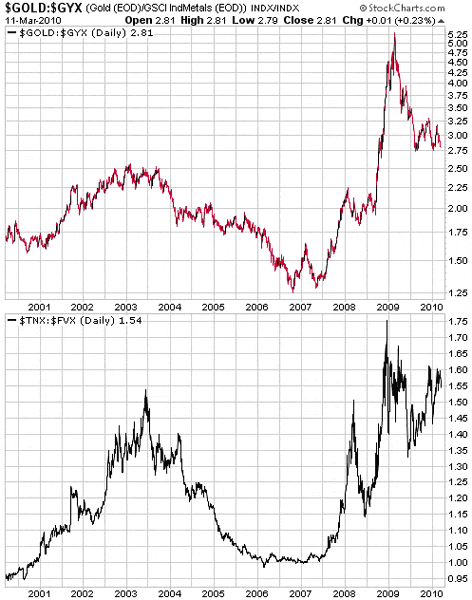|
|||
Are rising interest rates bullish or bearish for gold?Steve Saville Below is an excerpt from a commentary originally posted at www.speculative-investor.com on 14th March, 2010. Interest rates trended upward during the gold bull market of the 1970s in parallel with a generally high level of inflation fear, leading to the belief in some quarters that gold bull markets always go hand-in-hand with rising interest rates and inflation expectations. However, this belief was proved wrong over the past decade in that gold trended upward while interest rates and inflation expectations either oscillated near 40-year lows or had a downward bias. It was a strange decade in that confidence in the major currencies was clearly on the decline (as indicated by gold's performance), and yet inflation expectations remained at relatively low levels throughout.
The reason that a large increase in the yield-spread (a pronounced 'steepening' of the yield curve) tends to be bullish for gold is that it indicates either rising inflation expectations (if the yield-spread is being driven upward by rising long-term interest rates) or falling financial-market liquidity (if the yield-spread is being driven upward by falling short-term interest rates). The large increases in the yield-spread that occurred over the past decade were driven by falling financial-market liquidity; or, to put it another way, by increasing risk aversion. ### Steve Saville Regular financial market forecasts and analyses are provided at our web site: We aren't offering a free trial subscription at this time, but free samples of our work (excerpts from our regular commentaries) can be viewed at: http://tsi-blog.com Saville Archives |

